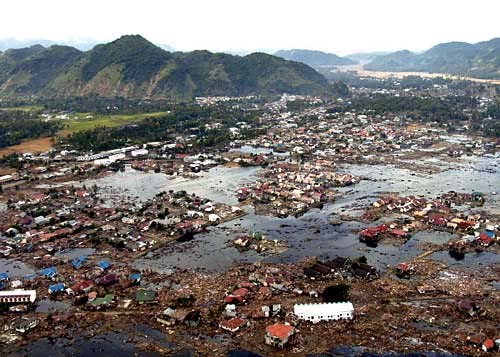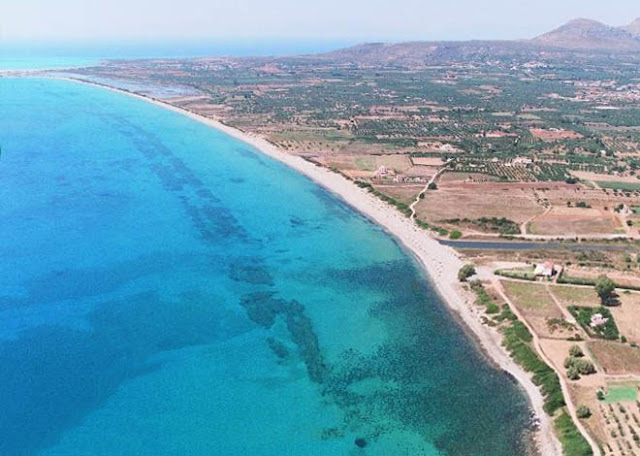1. The Lion and the Jackal.
The Lion and the Jackal agreed to hunt on shares, for the purpose of laying in a stock of meat for the winter months for their families.
As the Lion was by far the more expert hunter of the two, the Jackal suggested that he (himself) should be employed in transporting the game to their dens, and that Mrs. Jackal and the little Jackals should prepare and dry the meat, adding that they would take care that Mrs. Lion and her family should not want.
This was agreed to by the Lion, and the hunt commenced.
After a very successful hunt, which lasted for some time, the Lion returned to see his family, and also to enjoy, as he thought, a plentiful supply of his spoil; when, to his utter surprise, he found Mrs. Lion and all the young Lions on the point of death from sheer hunger, and in a mangy state. The Jackal, it appeared, had only given them a few entrails of the game, and in such limited quantities as barely to keep them alive; always telling them that they (i. e., the Lion and himself) had been most unsuccessful in their hunting; while his own family was reveling in abundance, and each member of it was sleek and fat.
This was too much for the Lion to bear. He immediately started off in a terrible fury, vowing certain death to the Jackal and all his family, wherever he should meet them. The Jackal was more or less prepared for a storm, and had taken the precaution to remove all his belongings to the top of a krantz (i. e., a cliff), accessible only by a most difficult and circuitous path, which he alone knew.
When the Lion saw him on the krantz, the Jackal immediately greeted him by calling out,
Good morning, Uncle Lion."
"How dare you call me uncle, you impudent scoundrel," roared out the Lion, in a voice of thunder," after the way in which you have behaved to my family?"
"Oh, Uncle! How shall I explain matters? That beast of a wife of mine!" Whack, whack was heard, as he beat with a stick on dry hide, which was a mere pretence for Mrs. Jackal's back; while that lady was preinstructed to scream whenever he operated on the hide, which she did with a vengeance, joined by the little Jackals, who set up a most doleful chorus. "That wretch!" said the Jackal. "It is all her doing. I shall kill her straight off," and away he again belabored the hide, while his wife and children uttered such a dismal howl that the Lion begged of him to leave off flogging his wife. After cooling down a little, he invited Uncle Lion to come up and have something to eat. The Lion, after several ineffectual attempts to scale the precipice, had to give it up.
The Jackal, always ready for emergencies, suggested that a reim should be lowered to haul up his uncle. This was agreed to, and when the Lion was drawn about halfway up by the whole family of Jackals, the reim was cleverly cut, and down went the Lion with a tremendous crash which hurt him very much. Upon this, the Jackal again performed upon the hide with tremendous force, for their daring to give him such a rotten reim, and Mrs. Jackal and the little ones responded with some fearful screams and yells. He then called loudly out to his wife for a strong buffalo reim which would support any weight. This again was lowered and fastened to the Lion, when all bands pulled away at their uncle; and, just when he had reached so far that he could look over the precipice into the pots to see all the fat meat cooking, and all the biltongs hanging out to dry, the reim was again cut, and the poor Lion fell with such force that he was fairly stunned for some time. After the Lion had recovered his senses, the Jackal, in a most sympathizing tone, suggested that he was afraid that it was of no use to attempt to haul him up onto the precipice, and recommended, instead, that a nice fat piece of eland's breast be roasted and dropped into the Lion's mouth. The Lion, half famished with hunger, and much bruised, readily accepted the offer, and sat eagerly awaiting the fat morsel.
In the mean time, the Jackal had a round stone made red-hot, and wrapped a quantity of inside fat, or suet, round it, to make it appear like a ball of fat. When the Lion saw it held out, he opened his capacious mouth to the utmost extent, and the wily Jackal cleverly dropped the hot ball right into it, which ran through the poor old beast, killing him on the spot.
It need hardly be told that there was great rejoicing on the precipice that night.
2. Clever Jackal gets Away:
"Hawu, hawu, hawu, my children," Gogo began one evening. "You know, cleverness is a very important thing to own! Why, cleverness has helped Nogwaja out of the cooking pot more than once!"
"The Jackal is also a clever animal, isn't he, Gogo?" asked little Sipho (see' poh), who was quite proud that his nickname was Mpungushe (mpoo-ngoo'-shay = "jackal"). Gogo, in fact, had given him that name because of the loud howl he had made as a baby. Sipho liked to think it was because he was quick and agile as the Jackal.
Gogo laughed and looked at the child at her feet. "Yes, my boy! You are right! Jackal is a very clever animal. Sometimes too clever for his own good!"
"I remember how he helped Jabu the herdboy by tricking Bhubesi back into the snare. Tell us another tale about Jackal, Gogo!" begged Sipho.
"Yes, Gogo," her other grandchildren chorused. "Please tell us...."
"Alright, my children. But listen and learn!" Gogo settled her round self down more comfortably upon the tree stump. "Kwasuka sukela . . ."
One day long ago, Jackal was trotting through a narrow, rocky pass. As he often did, he kept his nose to the ground as he ambled along, to catch the odd scent. "Never know when I'll happen upon my next meal, " he thought to himself, although it was highly unlikely that he would find a rat out in the midday heat. But perhaps he could catch a lizard or two.
Suddenly he was aware of a movement ahead of him in the pass. "Oh, no!" Jackal moaned and stopped dead-still in his tracks. Lion was coming toward him. Realising that he was too near to escape, Jackal was filled with fear. He had played so many tricks on the great Bhubesi in the past, he was sure that lion would take this opportunity to get his revenge. In a flash Jackal thought of a plan.
"Help! Help!" cried Jackal. He cowered down on the cliff path, looking above at the rocks.
Lion stopped short in surprise.
"Help!" Jackal howled, using the fear he felt in the middle of his chest to accentuate his cry. Jackal glanced up at Bhubesi. "Oh, great Nkosi! Help! There is no time to lose! See those great rocks above us? They are about to fall! We shall both be crushed to death!!!! Oh, mighty Lion, do something! Save us!" And Jackal cowered even lower, his paws covering his head.
Lion looked up, most alarmed. Before he even had a chance to think, Jackal was begging him to use his strength to hold up the overhanging rock. So Lion put his brawny shoulder to the rock and heaved.
"Oh, thank you, great King!" yelped Jackal. "I will quickly fetch that log over there to prop under the rock, and we will both be saved!" With that Jackal bounded out of sight.
Lion was left all alone to struggle under the weight of the unmoving rock. How long he remained there before he realised that it was another trick, we will never know. But this much we do know: Jackal continued to live by his wits!
3. The Man who never Lied.
Once upon a time there lived a wise man by the name of Mamad. He never lied. All the people in the land, even the ones who lived twenty days away, knew about him.
The king heard about Mamad and ordered his subjects to bring him to the palace. He looked at the wise man and asked:
" Mamad, is it true, that you have never lied?"
" It's true."
"And you will never lie in your life?"
" I'm sure in that."
"Okay, tell the truth, but be careful! The lie is cunning and it gets on your tongue easily."
Several days passed and the king called Mamad once again. There was a big crowd: the king was about to go hunting. The king held his horse by the mane, his left foot was already on the stirrup. He ordered Mamad:
"Go to my summer palace and tell the queen I will be with her for lunch. Tell her to prepare a big feast. You will have lunch with me then."
Mamad bowed down and went to the queen. Then the king laughed and said:
"We won't go hunting and now Mamad will lie to the queen. Tomorrow we will laugh on his behalf."
But the wise Mamad went to the palace and said:
"Maybe you should prepare a big feast for lunch tomorrow, and maybe you shouldn't. Maybe the king will come by noon, and maybe he won't."
"Tell me will he come, or won't he?" - asked the queen.
"I don't know weather he put his right foot on the stirrup, or he put his left foot on the ground after I left."
Everybody waited for the king. He came the next day and said to the queen:
"The wise Mamad, who never lies, lied to you yesterday."
But the queen told him about the words of Mamad. And the king realized, that the wise man never lies, and says only that, which he saw with his own eyes.
4. Why the Cheetah's cheeks are stained
"Kwasuka sukela...."
Long ago a wicked and lazy hunter was sitting under a tree. He was thinking that it was too hot to be bothered with the arduous task of stalking prey through the bushes. Below him in the clearing on the grassy veld there were fat springbok grazing. But this hunter couldn't be bothered, so lazy was he! He gazed at the herd, wishing that he could have the meat without the work, when suddenly he noticed a movement off to the left of the buck. It was a female cheetah seeking food. Keeping downwind of the herd, she moved closer and closer to them. She singled out a springbok who had foolishly wandered away from the rest. Suddenly she gathered her long legs under her and sprang forward. With great speed she came upon the springbok and brought it down. Startled, the rest of the herd raced away as the cheetah quickly killed her prey.
The hunter watched as the cheetah dragged her prize to some shade on the edge of the clearing. There three beautiful cheetah cubs were waiting there for her. The lazy hunter was filled with envy for the cubs and wished that he could have such a good hunter provide for him. Imagine dining on delicious meat every day without having to do the actual hunting! Then he had a wicked idea. He decided that he would steal one of the cheetah cubs and train it to hunt for him. He decided to wait until the mother cheetah went to the waterhole late in the afternoon to make his move. He smiled to himself.
When the sun began to set, the cheetah left her cubs concealed in a bush and set off to the waterhole. Quickly the hunter grabbed his spear and trotted down to the bushes where the cubs were hidden. There he found the three cubs, still to young to be frightened of him or to run away. He first chose one, then decided upon another, and then changed his mind again. Finally he stole them all, thinking to himself that three cheetahs would undoubtedly be better than one.
When their mother returned half-an-hour later and found her babies gone, she was broken-hearted. The poor mother cheetah cried and cried until her tears made dark stains down her cheeks. She wept all night and into the next day. She cried so loudly that she was heard by an old man who came to see what the noise was all about.
Now this old man was wise and knew the ways of the animals. When he discovered what the wicked hunter had done, he became very angry. The lazy hunter was not only a thief, he had broken the traditions of the tribe. Everyone knew that a hunter must use only his own strength and skill. Any other way of hunting was surely a dishonour.
The old man returned to the village and told the elders what has happened. The villagers became angry. They found the lazy hunter and drove him away from the village. The old man took the three cheetah cubs back to their grateful mother. But the long weeping of the mother cheetah stained her face forever. Today the cheetah wears the tearstains on its face as a reminder to the hunters that it is not honourable to hunt in any other way than that which is traditional.
5. Why the Warthog goes about on his knees.
"Oh, Gogo," little Sipho asked one evening, "could you tell us the story of clever Jackal again?" Sipho, whose nickname was Mpungushe "jackal," never tired of hearing tales of his beloved namesake.
"Hawu, Sipho," moaned several of his siblings, "Not again, little Jackal! You will wear out our ears with stories of Mpungushe!"
Gogo laughed her deep, round laugh. Soon each of her grandchildren were laughing along with her.
"I, too, love the stories of the Jackal!" Gogo looked at Sipho. "But we do not want to cause your brothers and sisters to become deaf. I think there is another tale that I can tell you of an animal who tried to be as clever as Jackal!"
Kwasuka sukela . . .
Wart hog had made himself a lovely, spacious home in an old termite mound that an aardvark* had cleared out. He had built it up and made a wide entrance. He thought it was the most magnificant home in Africa and would often stand at the entrance of his dwelling with his snout in the air as the giraffe, wildebeest** and zebra passed to the watering hole. "Hah," he thought to himself, "no one has such a fine home!"
One day as he looked out from the entrance of his cave he was horrified to see a huge lion stealthily stalking toward him. He started to back away, but because he had made the entrance to his place so grand, the lion would have no difficulty in following Wart Hog right in. "Ahhhh," panicked Wart Hog, "Bhubesi will eat me in my own lounge! What will I do?"
Wart Hog decided to use an old trick he'd heard Jackal bragging about. Wart Hog pretended to be supporting the roof of his hole with his strong back, pushing up with his tusks. "Help!" he cried to the lion, "I am going to be crushed! The roof is caving in! Flee, oh, mighty Bhubesi, before you are crushed along with me!"
Now Lion is no fool. He recognized Jackal's old ploy straight away ("Do you remember that story, children?"), and he wasn't going to be caught out again. He roared so fiercely that Wart hog dropped to his knees, trembling. Wart hog begged for mercy. Luckily for him Lion was not too hungry. So he pardoned the wart hog and left, saying, "Stay on your kness, you foolish beast!"
Lion laughed to himself and shook his shaggy head as he walked away. Imagine, slow-witted Wart hog trying to copy Jackal's trick! Wart hog took Lion's order to heart. That is why, to this day, you will see Wart hog feeding on his knees, in a very undignified position, with his bottom up in the air and his snout snuffling in the dust.



























